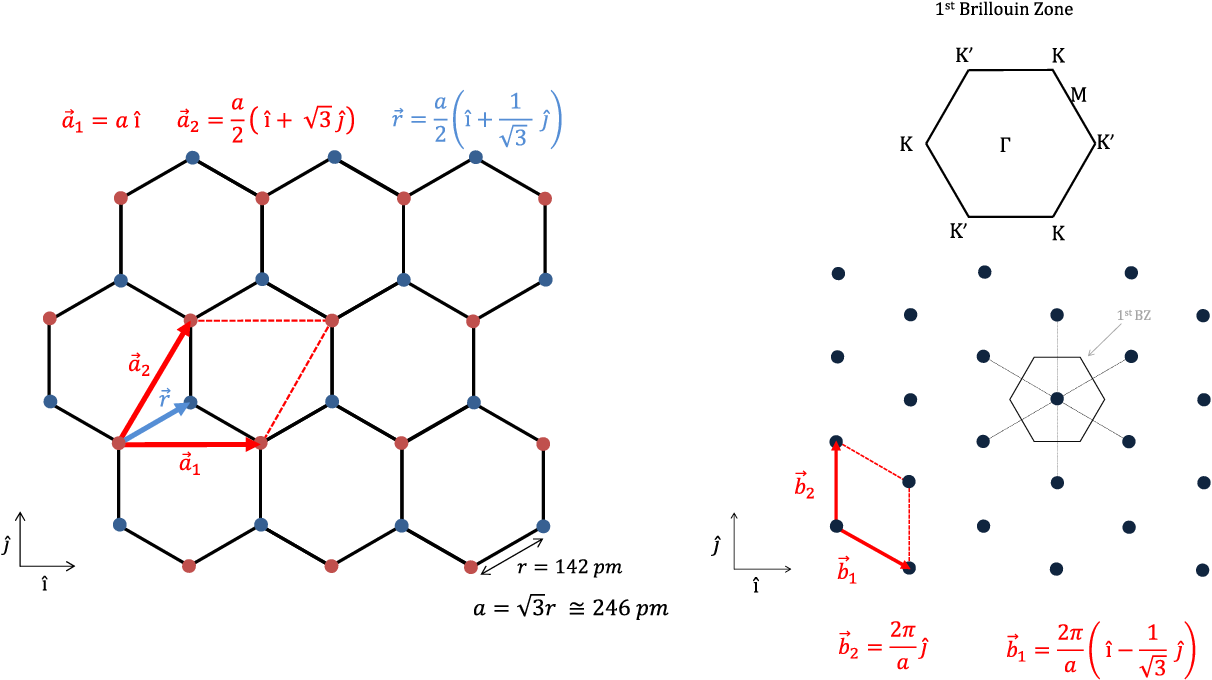For the First case where you have a square lattice, the first Brillouin zone is a square that lies between $\frac{-|A|}{2} \rightarrow \frac{|A|}{2}$ in the $\hat{x}$ direction and $\frac{-|B|}{2} \rightarrow \frac{|B|}{2}$ in the $\hat{y}$ direction. Assuming that you chose a lattice point as your origin in the k-space. (Here is a reference for how to draw it https://www.doitpoms.ac.uk/tlplib/brillouin_zones/printall.php)
For the Second case choose an origin, using your reciprocal lattice vectors construct the overall lattice structure. Then you will see that A Hexagonal lattice in the position space (let's say with a side length of 1) is a hexagonal lattice in the momentum space that is oriented by $90^\circ$ (with a side length of $\frac{2 \pi}{\sqrt{3}}$. Then you construct the Brillouin zones by drawing the bisectors (Bragg Plane's) between consecutive neighbouring points.
Here's an image I have taken from ( Carvalho, Alexandre F.. “Simultaneous synthesis of diamond on graphene for electronic application.” (2015) ). Their lattice vectors are shifted by $\frac{2 \pi}{\sqrt{3}} \hat{y}$ compared to yours but it gives the same result.

